June Beetle
- April 5, 2024
- 0 comment
June beetles, also known as Phyllophaga, are a diverse group of beetles found in various parts of the world. These beetles are characterized by their robust bodies and clubbed antennae. While they are commonly encountered during the summer months, their activity may extend beyond this period. June beetles vary in size and color, with species ranging from metallic green to brown, often exhibiting iridescent hues. They inhabit a wide range of environments, including grasslands, forests, and agricultural areas. The lifecycle of June beetles consists of four main stages: egg, larva, pupa, and adult. Eggs are typically laid in soil, and the larvae, known as grubs, feed on organic matter before pupating and emerging as adults.

Adult June beetles often feed on foliage, flowers, and fruits, making them pests in agricultural settings. Despite their name, June beetles may be active from late spring to early autumn and are sometimes attracted to lights at night. While they can cause damage to crops and ornamental plants, June beetles play important roles in ecosystems as decomposers and prey for other animals. Understanding their biology and ecological significance is crucial for effective pest management and conservation efforts.
| Specification | Description |
|---|---|
| Scientific Name | Phyllophaga |
| Common Name | June Beetle |
| Family | Scarabaeidae |
| Physical Features | Robust body, oval-shaped, clubbed antennae |
| Color | Metallic green to brown, sometimes with iridescent hues |
| Size | Varies depending on species |
| Habitat | Grasslands, forests, agricultural areas |
| Lifecycle | Egg, larva (grub), pupa, adult |
| Diet | Larvae feed on roots and organic matter; adults feed on foliage, flowers, and fruits |
| Activity Period | Active from late spring to early autumn |
| Behavior | Some species attracted to lights at night |
| Ecological Role | Decomposers, prey for other animals, contribute to nutrient cycling and soil health |
| Conservation Status | Varies by species, most not considered endangered |
June Beetles: A Comprehensive Guide
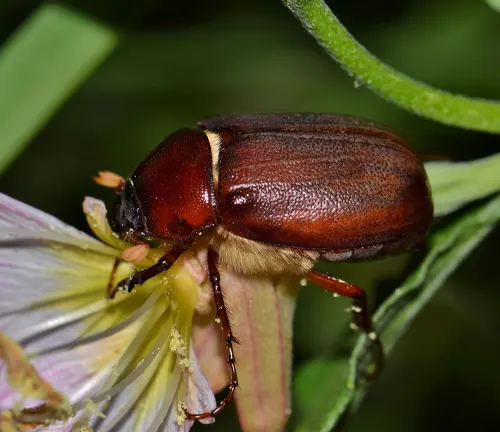
June beetles, scientifically known as Phyllophaga, are a diverse group of beetles belonging to the family Scarabaeidae. These insects are commonly encountered in various parts of the world and are known for their distinct physical features and behaviors.
June beetles are a type of scarab beetle characterized by their typically robust bodies and clubbed antennae. They are often found during the summer months, hence the name “June beetle,” although their activity may extend beyond this period.
Physical Features
The physical features of June beetles vary depending on the species, but they share some common characteristics. These beetles typically have robust, oval-shaped bodies covered in a shiny exoskeleton. One distinctive feature of June beetles is their clubbed antennae, which are often quite noticeable. Their colors range from metallic green to brown, with some species exhibiting iridescent hues. Additionally, June beetles may have patterns or markings on their elytra (wing covers), which can vary in appearance among different species. Overall, June beetles have a characteristic appearance that distinguishes them from other types of beetles.

Habitat and Distribution
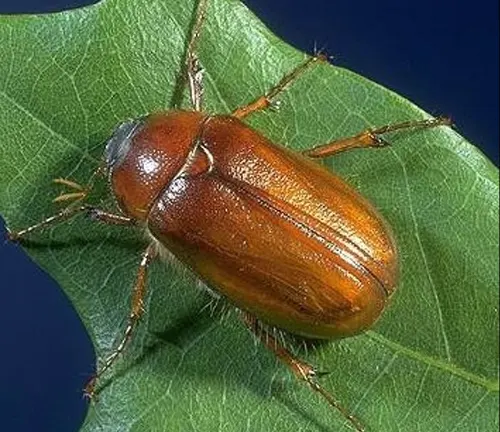

June beetles inhabit a wide range of habitats across various parts of the world. They can be found in grasslands, forests, agricultural areas, and even urban environments. The specific habitat preferences may vary among different species of June beetles.
In terms of distribution, June beetles are found on almost every continent, including North America, Europe, Asia, and parts of Africa. However, the exact distribution of species may vary depending on factors such as climate, vegetation, and habitat availability. Some species may be more common in certain regions than others, and their distribution patterns may be influenced by factors such as temperature, moisture, and food availability.
Lifecycle of June Beetles
The lifecycle of June beetles consists of four main stages: egg, larva, pupa, and adult.
Egg
Female June beetles lay eggs in soil, usually during the spring or early summer months. The eggs are typically laid in clusters and may be deposited near the surface of the soil.
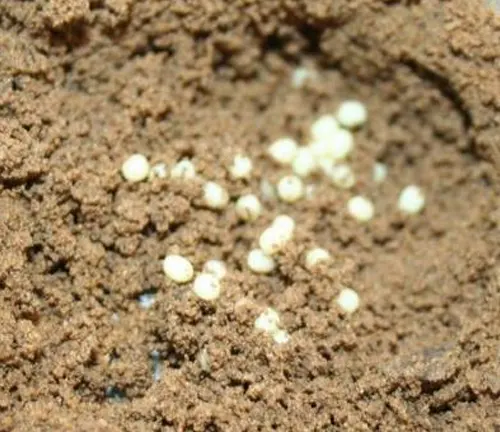
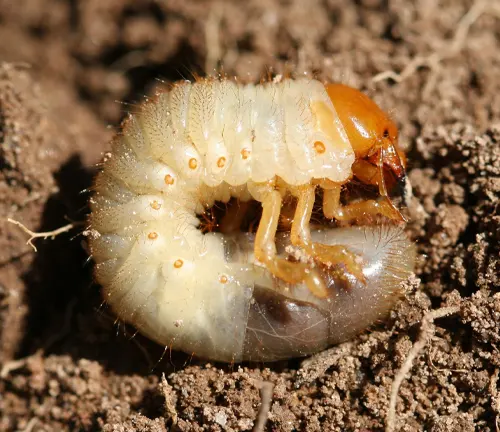
Larva (Grub)
After hatching from the eggs, June beetle larvae, often referred to as grubs, begin their development underground. They feed on organic matter, including roots and decaying plant material, as they grow. The larval stage can last anywhere from one to several years, depending on the species and environmental conditions.
Pupa
When the larval stage is complete, the grub pupates, forming a pupa underground. During this stage, the June beetle undergoes metamorphosis, transforming from a larva into an adult beetle. The pupal stage typically lasts for a few weeks to several months.
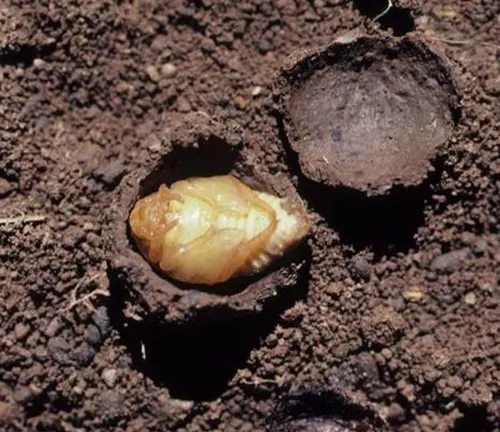
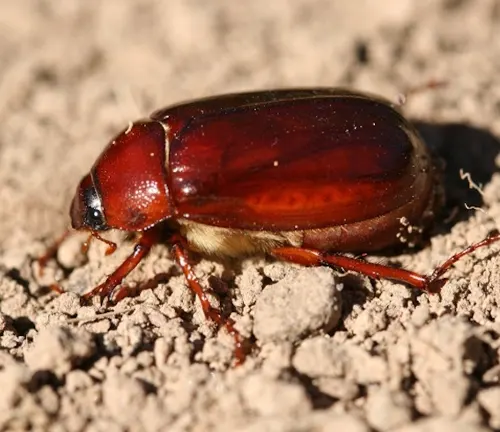
Adult
After completing metamorphosis, the adult June beetle emerges from the pupal case and ascends to the surface of the soil. The newly emerged beetle may spend some time maturing and hardening its exoskeleton before becoming fully active. Adult June beetles are typically active during the summer months and may feed on foliage, flowers, and fruits. They mate and lay eggs, completing the lifecycle and starting the process anew.
Feeding Habits
Larval Stage (Grubs)
During the larval stage, which can last for one to several years depending on the species, June beetles are known as grubs. Grubs primarily feed on roots and organic matter in the soil. They are considered soil-dwelling pests and can cause damage to grasses, crops, and ornamental plants by feeding on their root systems. This feeding behavior can result in reduced plant vigor, wilting, and even plant death in severe infestations.
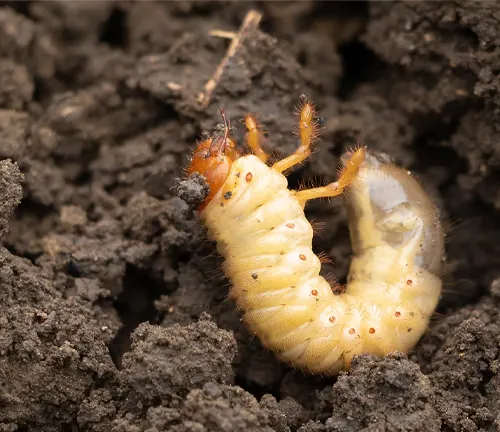
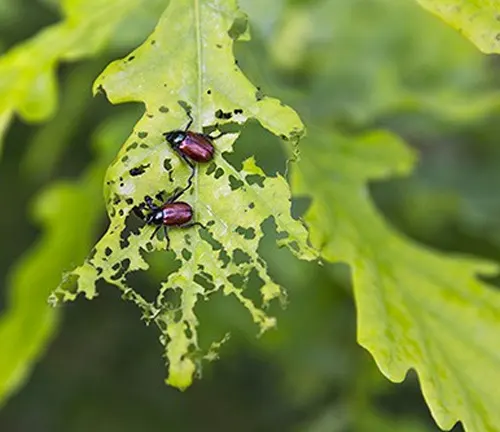
Adult Stage
Adult June beetles, on the other hand, primarily feed on foliage, flowers, and fruits. They are attracted to a wide range of plants and may cause damage to crops and ornamental plants by chewing on leaves, petals, and other plant parts. While they are not as destructive as their larval counterparts, adult June beetles can still cause significant damage in large numbers, particularly to crops such as grapes, berries, and ornamental trees and shrubs.
Impact on Agriculture
The impact of June beetles on agriculture can be significant, particularly in areas where they are present in large numbers. These beetles can cause damage to a wide range of crops and ornamental plants through their feeding activities. Some of the key impacts of June beetles on agriculture include:
- Defoliation: Adult June beetles feed on foliage, flowers, and fruits, often consuming large quantities of plant material. This can result in defoliation, where leaves are stripped from plants, reducing their ability to photosynthesize and limiting their growth and productivity.
- Crop Damage: June beetles can cause direct damage to crops such as grapes, berries, vegetables, and ornamental plants by feeding on their leaves, flowers, and fruits. This can lead to reduced yields, lower quality produce, and economic losses for farmers and growers.
- Root Damage: In their larval stage, June beetle grubs feed on roots and organic matter in the soil. This can weaken plants, reduce their ability to absorb water and nutrients, and make them more susceptible to drought, disease, and other stresses.
- Transmission of Plant Diseases: June beetles can also serve as vectors for plant diseases, spreading pathogens from plant to plant as they feed. This can further exacerbate the impact of their feeding activities on agricultural crops and ornamental plants.
Natural Predators
June beetles have several natural predators that play important roles in regulating their populations in the wild. These predators include various animals from different taxonomic groups, such as birds, mammals, and other insects. Here’s an overview of some common natural predators of June beetles:
- Birds: Many bird species feed on June beetles, especially during their active periods. Birds such as crows, blackbirds, starlings, robins, and thrushes are known to consume adult June beetles when they are available. Birds forage for beetles on the ground or in vegetation, helping to control beetle populations in their habitats.
- Mammals: Some mammals also prey on June beetles, particularly during their larval stage when they are found in the soil. Animals such as moles, shrews, mice, and raccoons may dig up June beetle grubs while searching for food underground. These mammals play a role in reducing beetle populations and may contribute to the natural regulation of beetle populations in their ecosystems.
- Other Insects: In addition to vertebrate predators, June beetles are preyed upon by various insect species. Predatory insects such as ground beetles, ants, spiders, and predatory stink bugs may feed on June beetle eggs, larvae, pupae, or adults. These insects are important natural enemies of June beetles and help to control their populations in agricultural and natural ecosystems.
Control and Management
Control and management of June beetle populations are important for minimizing their impact on agricultural crops, ornamental plants, and ecosystems. Several strategies and techniques can be employed to control and manage June beetle infestations effectively. Here are some common methods:
- Cultural Practices: Implementing cultural practices can help reduce June beetle populations and minimize damage to plants. Practices such as crop rotation, mulching, and intercropping can disrupt the beetle’s life cycle and make the environment less favorable for their development.
- Biological Controls: Introducing natural enemies of June beetles can help control their populations in agricultural and natural ecosystems. Biological control agents such as parasitic wasps, nematodes, and microbial insecticides can be used to target beetle eggs, larvae, or adults while minimizing harm to non-target organisms and the environment.
- Chemical Pesticides: Chemical pesticides can be used as a last resort to control severe June beetle infestations. Insecticides containing active ingredients such as carbaryl, imidacloprid, or spinosad can be applied to foliage, soil, or crops to kill beetle larvae or adults. However, it’s essential to use pesticides responsibly and follow label instructions to minimize environmental impact and risks to human health.
- Physical Barriers: Physical barriers such as row covers, netting, or screens can be used to protect plants from adult June beetles. These barriers prevent beetles from accessing plants and laying eggs, reducing damage and preventing infestations.
- Trap Cropping: Planting trap crops that are attractive to June beetles can help divert them away from valuable crops. Trap crops can be planted around the perimeter of fields or gardens to lure beetles away and reduce damage to primary crops.
- Monitoring and Early Detection: Regular monitoring of June beetle populations can help identify infestations early and implement control measures before damage occurs. Monitoring techniques such as pheromone traps, visual inspections, and soil sampling can be used to assess beetle populations and make informed management decisions.
Cultural Significance
In some cultures, June beetles are considered symbols of luck or fertility. They may also feature in folklore and mythology as creatures of significance.
Interesting Facts
- Despite their name, June beetles may be active from late spring to early autumn.
- Some species of June beetles are attracted to lights and may be found near illuminated areas at night.
- The larvae of June beetles are sometimes used as fishing bait.
Common Misconceptions
One common misconception about June beetles is that they are harmful to humans. While they can be pests in agricultural settings, they pose no direct threat to human health.
Ecological Role
June beetles play an important role in ecosystem functioning, particularly as decomposers and prey for other animals. Their activities contribute to nutrient cycling and soil health.
Conservation Status
While some species of June beetles may face habitat loss and other threats, most are not considered endangered. However, monitoring and conservation efforts are important to ensure their continued survival.
Different Species
Green June Beetle
(Cotinis nitida)
This species is known for its metallic green coloration and is commonly found in the eastern United States. They are active during the summer months and are attracted to ripe fruits.
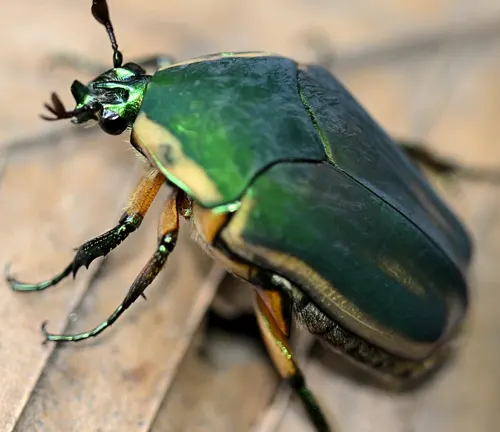
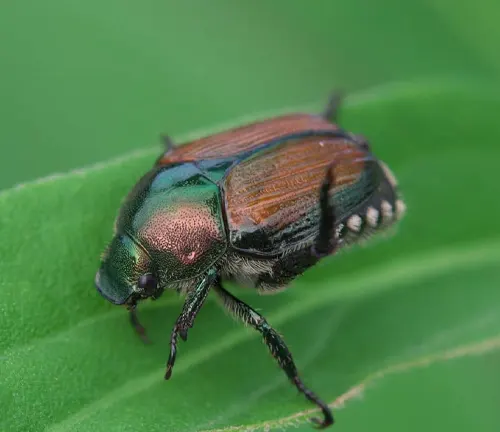
Japanese Beetle
(Popillia japonica)
Originally native to Japan, this species has become invasive in North America and other parts of the world. They have a distinct metallic green and copper coloration with white tufts of hair along the sides of the abdomen.
Ten-Lined June Beetle
(Polyphylla decemlineata)
Found in western North America, this species is named for the ten distinct white lines on its back. They are often seen flying around at dusk and are attracted to lights.
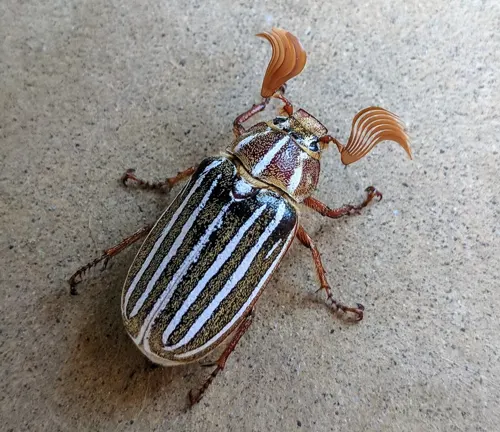
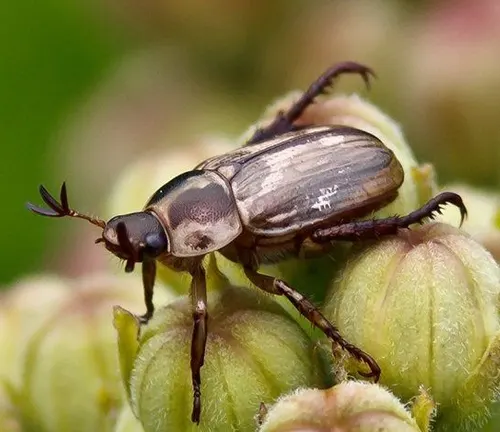
Oriental Beetle
(Anomala orientalis)
Native to Asia, this species has been introduced to North America and Europe. They have a dark brown to black coloration with distinctive white spots on the elytra (wing covers).
European Chafer
(Rhizotrogus majalis)
Originally from Europe, this species has been introduced to North America, where it has become a pest of turfgrass and ornamental plants. They are light brown with a hairy thorax and feed on plant roots as larvae.
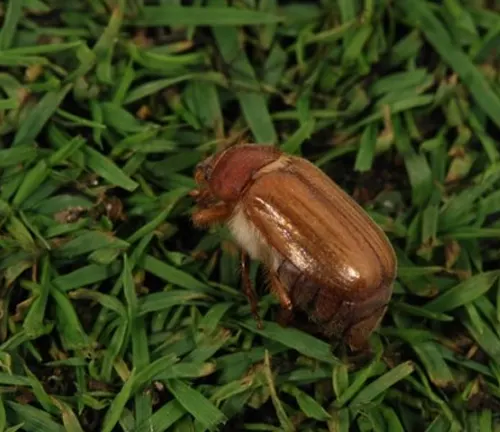
Frequently Asked Question (FAQs)
- Are June beetles harmful to humans?
June beetles are not harmful to humans. They primarily feed on plants and organic matter and do not pose a direct threat to humans. - How long do June beetles live?
The lifespan of June beetles varies depending on the species. Adults typically live for a few weeks to a few months. - Can June beetles fly?
Yes, June beetles are capable fliers. They are often attracted to lights at night and may be seen flying around illuminated areas. - Do June beetles have any natural predators?
Yes, June beetles have natural predators, including birds, mammals, and other insects. These predators help regulate June beetle populations in their natural habitats. - Are June beetles considered pests?
While June beetles can be pests in agricultural settings due to their feeding habits, they play important roles in ecosystems as decomposers and prey for other animals. - What do June beetles eat?
June beetle larvae primarily feed on roots and decaying plant material, while adult beetles often consume foliage, flowers, and fruits. - How do I control June beetle infestations in my garden?
There are several methods to control June beetle infestations, including biological controls, chemical pesticides, and cultural practices such as crop rotation and mulching. - Are June beetles attracted to lights?
Some species of June beetles are attracted to lights at night and may be found near illuminated areas. - When are June beetles most active?
June beetles are typically most active during the summer months, although their activity may extend from late spring to early autumn. - Do June beetles have any cultural significance?
In some cultures, June beetles are considered symbols of luck or fertility. They may also feature in folklore and mythology as creatures of significance. - Can June beetles cause damage to crops?
Yes, June beetles can cause significant damage to crops and ornamental plants, particularly when present in large numbers. - Are June beetles attracted to specific types of plants?
Different species of June beetles may have preferences for certain types of plants, but they generally feed on a wide range of vegetation.


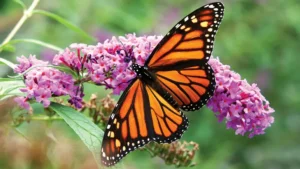

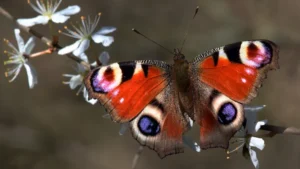

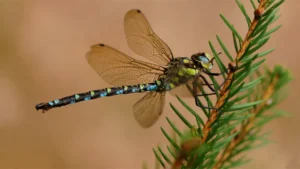
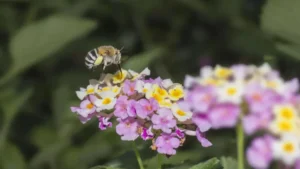
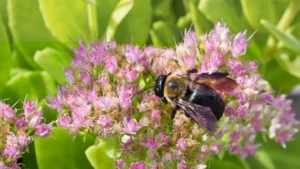
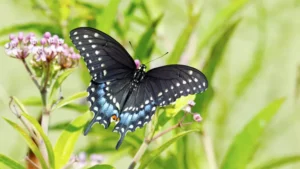
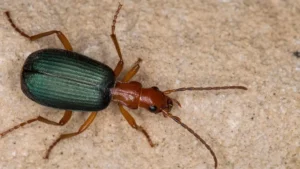

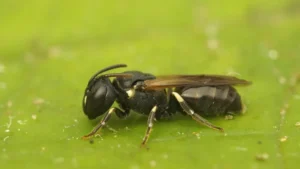

Leave your comment